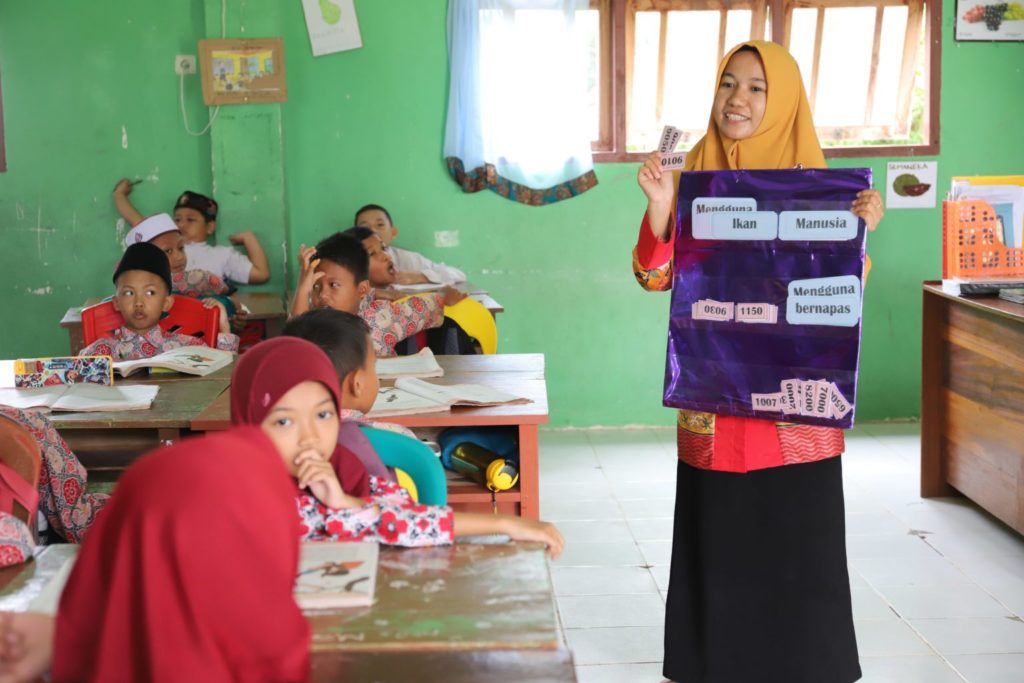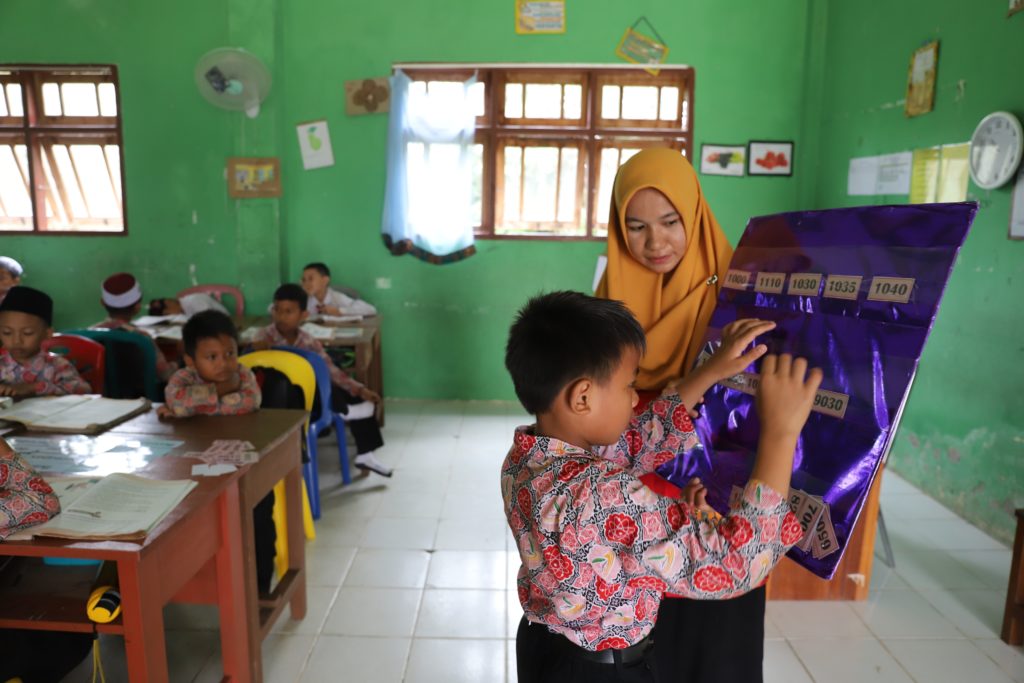
My name is Harmidah. I graduated from Elementary School Teacher Education (Pendidikan Guru Sekolah Dasar, or PGSD), of Makassar Public University. I have been teaching for two years in SD IT Insan Utama Integrated Islamic Elementary School. Last May, I received early grade literacy training from the Malinau Education Office. After that training, I immediately began using it in my class. For example, today, I taught about the characteristics of living things by using the Reading Board media.
We prayed first before we began to learn. One of my students asked to lead the prayer together. After that, we continued our activities by reading stories. I took a book called Akal Si Kancil, or The Mousedeer’s Wit. The book told about the ingenuity of an animal, called Mousedeer, in solving problems. I read the story for about five minutes. The children love to have stories read to them.
After reading the story, we entered the topic of the lesson. I conveyed to the children that, at the end of the lesson, they will recognize the characteristics of living things. Since we are still in the early grades, I have to introduce words, syllables, sentences, and numbers, to the children.
I told the children that there are five characteristics of living things: breathing, growing, reproducing, moving, and being sensitive to stimuli. I explained about the five characteristics one by one.
Breathing – I asked my children to take a deep breath and strongly exhale. They did it excitedly. I also asked them how they felt after inhaling and exhaling. The children answered that they felt the air coming out of their mouth. I said that this was a sign that they were breathing, and that breathing is one of the characteristics of living things.
Growing – I conveyed that every human being’s body grows bigger and taller over time. Their height in kindergarten will be different from when they are in elementary school. This growth is marked by a change in numbers. The more they grow, the bigger the number will be.

To show this change in numbers, I used the Reading Board. I chose five random numbers from 1000 to 10,000. I asked one of the children to come forward to arrange the numbers from the smallest to largest.
1000, 2000, 4000, 5000, and 10,000 were the numbers that were arranged by the children.
I asked the other students, “Is this number arrangement correct?”
“That’s right, ma’am,” they replied in unison.
I was happy because the children understood that changes in numbers indicate growth.
Then, I invited the children to play syllables. I prepared pieces of two sentences. Each piece had one word. Those pieces had to be assembled into a correct sentence, such as the following:
- Fish breathe by using gills.
- Humans breathe with lungs.
Once again, I asked the children to come to the front of the class. They had to string the sentence together and read it out loud. I’m glad they did well.
Reproducing – I asked the children to open their textbooks to a short story about grafting trees. From that reading, the children learned that living things can multiply in many ways. One of them is by grafting.
Moving – I asked the children to walk to the front of the class. Walking from the table to the front of the class is a form of movement.
Being sensitive to stimuli – What about being sensitive to stimuli? For that, I asked the children to hit their friends’ shoulders.
“How did you feel, child?” I asked.
“Surprised,” replied one child.
“That is a sign that we receive stimulation,” I replied.
I closed my learning with individual assignments. I asked the children to write a sentence based on the five characteristics of living things. After that, our learning is done.






